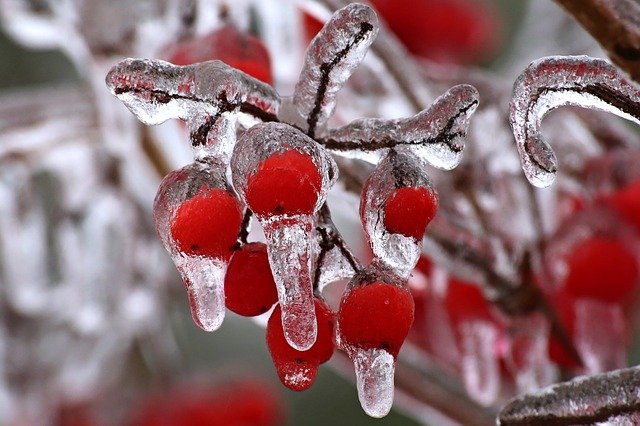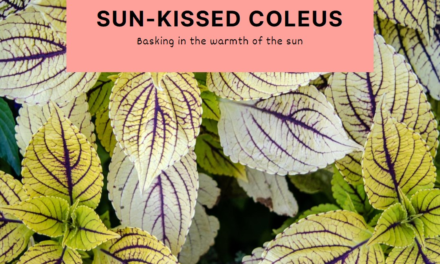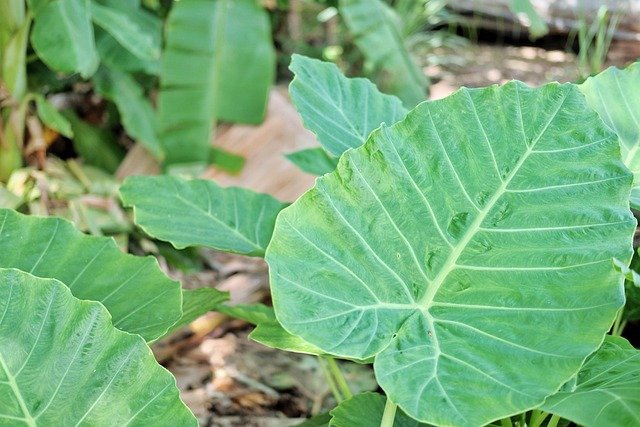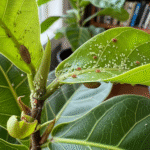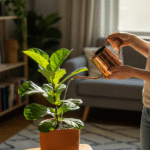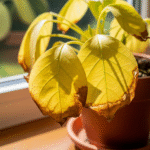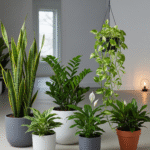Elephant ear plants are a tropical variety that is frost-sensitive and thrive well in moderately hot and humid conditions. Their dramatically large leaves are truly their most significant trait. The name, elephant ear plants, was allotted mainly due to its prominent vein structure, just like the ears of elephants. You cannot deny that their huge size, heart-shaped leaves are a distinctive feature of these perennial plants.

Elephant ear plants classification
Elephant ear is a common name given to all the plants that have large, flat, and ovate-shaped leaves. The scientific classification is, however, not as simple as it may seem.
Elephant ear plants are broadly divided into 4 genera
- Colocasia
- Alocasia
- Xanthosoma
- Caladium
Their natural occurrence
Colocasia and Alocasia are mostly located in the same regions. These genera are native to Southern Asia and Southeastern Asia with prime prevalence in Indonesia, Malaysia, New Guinea, certain regions of Australia, and Pacific Island.
The genus Xanthosoma, on the other hand, is mostly found in regions of America that have tropical climates. The cultivars of Caladium, also known as angel wings, are native to South America.
Their general structure
Elephant ear plants do not have a stem similar to other ordinary plants. You would be surprised to know that the whole structure is supported by a corm (a bulb-shaped underground part that resembles a potato.) They have large petioles arising directly from the corm that support the leaves individually at their tip.
The arrangement of the leaves is also unique. The upward or outward arrangement of leaves resembles the structure of petals of a flower.
The upright elephant ear plants belong to the genus Alocasia. Xanthosoma also has upright leaves while the peltate outward arrangement is typical of Colocasia.
Certain varieties grow above ground stolons(runners) to feed.
The question that is frequently asked is that do elephant ear plants bloom?
Some of these foliage plants can surprisingly also bloom. They grow flowers, which consist of a spathe surrounded by spadix. It also bears globular fruit, which is mostly yellow or green and has multiple seeds.
Fun fact: Did you know that elephant ear plants are poisonous? The calcium oxalate crystals present in their leaves cause skin irritation. This can be lethal if eaten directly!
Historical uses of Elephant ear plants
Elephant ear plants have been used for centuries for multiple purposes. For the last 28000 years, this plant has been used as a food crop in equatorial countries such as Indonesia, India, and China. Due to its excessive availability, this plant is still used as a food source and a fodder crop. As a matter of fact, elephant ear plants are listed as the 14th most consumed plant in the world!
All the parts of the plant can be eaten, but they have to be boiled or steamed first to remove calcium oxalate crystals.
Interesting fact: In Hawaii, the elephant ear plant was the main food crop during the mid-1800s.
The hybridization of these plants has resulted in multiple new varieties that are now used as ornamental plants.
Types of elephant ear plants
Elephant ear types are very diverse. These ornamental plants have an impressive size range; with 8 inches tall ‘Dark Shadows’ (Colocasia heterochroma) to extremely large 9-foot tall plants such as Thailand Giant Strain and Laosy Giant (Colocasia gigantea).
Not only this, but the size of the leaves also varies significantly. The leaves of Dark Shadows are merely 4 inches wide and 6 inches tall whereas the leaf size of Colocasia gigantea is breathtakingly huge, standing at 4 feet wide by 5 feet long!
This diversity in size can be useful for you to select which plant will appropriately fit in your garden. You must also consider the hardiness and other growth requirements mentioned below before selecting the plant you want for your garden.
Small Elephant Ears
These diminutive plants do not exceed the size of 2 feet. Such elephant ears are ideally planted together in a large area or can serve as an accessory for other tropical plants in its vicinity.
The cultivars included in this range are:
● Colocasia fallax
This plant lies in the Hardiness zone 7b to 10. Its place of origin is China, where it is found in abundance in tropical regions. Colocasia fallax has a total height of merely 15 inches and its leaves are medium green which has a silver-colored vein arrangement with a thick vein present across the center.
This plant requires ample hydration and light shade. If given the ideal conditions, it can cover a 4-foot patch in 2 years. The miniature stolons of this variety are present above the ground, a trait that makes it more appealing than others.
● Jenningsii (Colocasia affinis)
Colocasia affinis lies in the Hardiness zone 8 to 10. Known by the name ‘Jenningsii’, the appeal to this eye-catching plant is mainly its charcoal-colored leaves which are velvety in touch and have a charcoal-colored vein system with a silver blotch in the center.
You cannot go wrong with this 1-foot variety if you provide this plant with appropriate moisture in the soil and light shade. It has yellow flowers and sprouts again in mid-June. Being a perennial plant, this plant tends to go into dormancy even if you live in a region that stays within the temperature limit ideal for its growth.
● Silver dollar (Colocasia fallax)
This hybrid of the original Colocasia fallax has more rounded leaves that are rich green in color. It has narrow silver veins and a silver blotch at the center of its leaves. The wood-colored petioles give a sharp contrast to its green leaves. All the conditions necessary for its growth are the same as its parent plant.
● Dark Shadows (Colocasia Heterochroma)
This is the smallest elephant ear plant, with a height of merely 8″. It thrives in a Hardiness zone of 7b to 9. Its petite structure consists of a small petiole and leaves of 6″ height and 4″ width. This outstanding plant has silvery green leaves and black veins running through its leaves; a sight that will add a dramatic touch to the plant collection in your backyard. This plant also requires moisture and partial shade and goes into dormancy during winters despite what the temperature is.
● Tickle Me Pink
This fancy-leaf Caladium variety has shades of green, white and pink in its leaves. The Hardiness Zone of this plant is 10 to 11. Its structure is quite miniature, with 15-20 inches in height and 8-10 inches in width. It can be easily grown as a houseplant or outside. It partly needs sun exposure and shade.
● White Wonder
White wonder is another mesmerizing plant of the genus Caladium. With white leaves lined with green color at the borders, it offers a completely different color pattern than the usual plants. This centerpiece can be grown in the house too. It is similar in size to Tickle Me Pink and belongs to Hardiness Zone 10 to 11.
● Mesmerized
There cannot be a name more appropriate than Mesmerized for this Caladium cultivar. You will be transfixed at the beauty of the amalgamation of a red splash at the center with green and orange colors. This plant is hardy in zones 10 to 11.
Medium Elephant Ears
The different elephant ear plants included in this range make it the largest group of all. The average height of plants in this group is 4′ to 5′ and are dominantly Colocasia esculenta, therefore they require full sun.
If you are looking for a variation in color and shape of leaves, you must consider medium Elephant ears. Besides this, the variegation also differs in certain plants of this category. Some are clumpers while others are runners. The clumping variety with dark green leaves is the most popular elephant ear plant type.
● Black beauty
This mutation of Colocasia ‘Illustris’ has an intense black leaf color and fewer green veins than its parent plant. It survives in a Hardiness zone of 7 to 10. This stunning plant stands at 30″ tall and proliferates significantly if given the right conditions.
● Black Magic
Being the first black leaf elephant ear to be officially introduced in the market, you will be in awe if you saw the outstanding color of this magnificent plant. It belongs to the Hardiness Zone 8a to 10. This 5′ tall plant is a huge hit among gardeners who have a liking for shades of purple and black.
● Black Runner
This plant is a mutant of Black Magic. Its 2 feet leaves are of a darker black shade and are more ruffled at the edges than the original plant. It is similar in height to Black magic and survives in the same zone as its parent.
● Chicago Harlequin
This elephant ear plant type offers a unique twist both in leaves and stems. Chicago Harlequin, belonging to Hardiness zone 7b to 10, not only has leaves with random light green patches but its 5-foot stem also has light green stripes running through the entire length. This mirage of colors is a splendid sight to see. You can grow this plant in well-hydrated places.
● Coal Miner
This is an Indian-derived hybrid of Colocasia esculenta ‘Illustris’. It is larger (54″ as compared to 40″) and has a different leaf background color (olive green as compared to medium green) than its parent plant. It belongs to the Hardiness Zone of 7-10 and spreads underground vigorously if given the right moisture. Its leaves are also velvety in appearance.
● Blue Hawaii
If you are looking to add a dramatic touch to your garden through elephant plants, look no further than Blue Hawaii. This exotic plant has the most vivid color scheme; with medium green leaves and bright purple veins on the front (which appear cranberry-colored at the back). This 30″ ideal length plant belongs to the Hardiness Zone 7b-10
● Illustris
Colocasia esculenta ‘Illustris’ belongs to the same Hardiness Zone as most of the elephant ear plants i.e., 7 to 10. Illustris grows well in wet soil only, so please do not expect it to grow in dry conditions. It has iconic black leaves with a green vein pattern, something which will attract everyone’s attention without a doubt.
● Rhubarb
This naturally occurring Colocasia esculenta variation is so vividly colored that you can’t miss it even from 100 feet away! Rhubarb, belonging to Hardiness zone 7b-10, will leave you bedazzled by its brilliant red leaves. Being just 4′ tall, this plant will serve as a perfect centerpiece for your garden.
● Pink China
Pink China has the highest survival rate in a range of temperatures. It belongs to the Hardiness Zone 6-10 and has a color contrast unknown to others. You would think of Pink China to have pink flowers but surprisingly, it has a mauvy pink stem! Its stem is 4′ tall and has striking green leaves.
● Diamond Head
Diamond Head is a unique hybrid of two different genera. It has characteristics of Colocasia esculenta ‘Black Magic’ and the glossy leaf structure of Alocasia. You would be thrilled to know that this 4 feet tall ideally heightened plant has mesmerizing chocolate brown, glossy, light ruffled leaves that adds to its attraction furthermore.
● Elena
Elena is a plant of delightful color combination. It has an ivory stalk that changes color to purple where it joins the leaves (yes, it’s true!) The leaves themselves are of distinct chartreuse color with a contrasting purple vein arrangement. Elena belongs to the Hardiness Zone 7b-10.
● Tiger Stripe
Tiger Stripe, as the name suggests, has heavily streaked purple and yellow stems. In addition to that, its leaves also have chartreuse yellow flecks spread all over its green base. It belongs to the Hardiness Zone 7b to 10 and grows via stolons.
● Yellow Splash
This exciting variation is a one-of-a-kind structure. The splashes of yellow color appear on all gray-green leaves of this plant. Moreover, it’s also easy to propagate as it only requires moist soil in hard summers.
● Alocasia portodora
Alocasia portadora is the scientific name of the upright elephant ear plant. This stands at 5′ tall and offers a unique leaf arrangement. It has upward pointed scallop leaves that sit atop green stems. Upright elephant ear plants are one of the most sought-after ornamental plants. They thrive optimally in moist soil conditions, with temperatures ranging from 16 to 18°C.
● Alocasia calidora
This gigantic upright elephant ear plant is a hybrid of two Alocasia plants. Its ultra big dramatic leaves grow nearly 4 feet long and 3 feet wide. The total height of this structure is five to seven feet. The highlighting feature of this upright elephant plant is its perfectly rounded, sky-pointing green leaves standing at the top of petioles arising from a trunk. Its Hardiness Zone is 9 to 11. A partly sunny location is an ideal place to grow this cultivar.
● Blackstem
Blackstem, another name for Alocasia macrorrhiza, is also a well-known upright elephant ear plant. With its 3 to 5-foot height and 2 foot wide dark leaves pointing upwards, the enthralling simplicity of this plant is beyond explanation. Its leaves are slightly ruffled at the edges and have specific ebony purple veins on the underside. It also belongs to 9 to 11 Hardiness Zones.
Large Elephant Ears
These giant plants tower well over other plants. With a height of over 5 feet, these gigantic plants are here to make a statement in your garden. Some of its cultivars include
● Burgundy Stem
If you want a magnificent plant that does not take over your garden, Burgundy stem is the right option for you. With its rich purple-colored petioles and light hazy purple-colored leaves, it’s a sight to behold. Just like most of the elephant ear plants, it belongs to Hardiness Zone 7b-10. It has an outstanding height of 80 inches with its leaves reaching the length of 3 feet! Its 1′ long flowers emit a papaya-like smell.
● Ruffles
This clumping plant proliferates easily in hard conditions. Standing at 6′ tall, Ruffles has 3′ long leaves that are scalloped at the edges. It belongs to the Hardiness Zone 7-10.
● Coffee Cups
Colocasia esculenta ‘Coffee Cups’ has a height of 6′ and has the most unusual leaf shape(hence the name). The leaves of this plant exhibit dramatic cupping, a phenomenon which is highlighted by glossy olive-green leaves with a purple-black vein system. This variety is only found in the wild and grows well in the ground soil. You would be amazed if you saw how magnificently the stem bends so that the leaf can empty the water it holds in case of rain!
● Colocasia gigantea
This variety resembles Alocasia due to its upright leaves that are clumped together. A 4′ stem holds these glaucous green leaves at the tip. An ironic name for such a height! This plant does not flower and proliferates via offsetting at a rapid speed.
Elephant ear companion plants
There is a variety of plants that can be paired with your elephant ears that accentuate the contrasting colors and thrive in the most organically rich soil. The best elephant ear companion plants are:
● Coleus
It provides the best contrast to your green elephant ears and loves ample sunlight.
● Cannas
Cannas love all the things that are essential for elephant ears i.e., sun, moisture, and fertilizer.
● Tropical hibiscus
These bright-colored plants act as perfect elephant ear companion plants as they require the same conditions to grow as elephant ears.
● Caladiums
You can pair Caladium with sun-loving elephant ear plant varieties so that these low-rising plants thrive well in their shade. Due to their perfect pairing, Caladiums and heightened elephant ears are considered container companions.
● New guinea impatiens
These plants look quite similar to tropical varieties and can tolerate sunlight as long as they receive a surplus amount of water.
● Lysimachia
Lysimachia is a ground trailing plant. Since it grows well in warm moist soil, it can be used as a groundcover or container companion.
● Cucumbers
Growing cucumbers as elephant ear companion plants have two benefits:
- Your foodscaping adventure will be successful as cucumber plants need partial shade and plenty of water to grow.
- The elephant ears will act as a support for cucumber plants.


